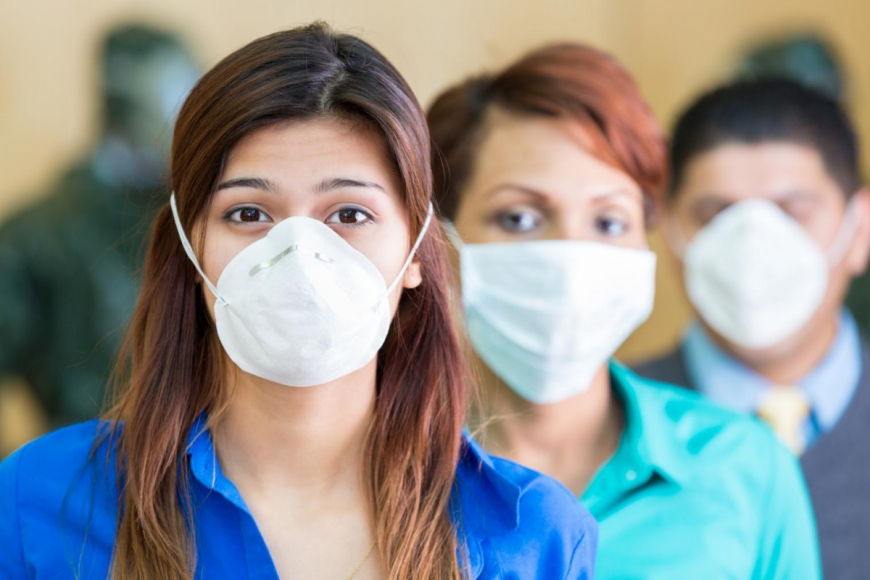Much to the surprise of businesses across the country, OSHA released a reminder on March 9, 2020 that cases of COVID-19 originating in the workplace are to be considered OSHA-recordable illnesses. With the growing number of COVID-19 cases across the globe, several questions may come to mind:
- Why would employee cases of COVID-19 be considered OSHA-recordable?
- How do we know if the employee(s) contracted COVID-19 in the workplace and not elsewhere?
- How do we record COVID-19 cases as OSHA-recordable illnesses?
- What can I do to prevent COVID-19 exposure and spread in my workplace?
- How will this affect my business?
And the list goes on!
OSHA requires employers to implement necessary control measures to prevent employee exposure to known hazards in the workplace. This doesn’t just apply to the known physical hazards of the workplace, it applies to all known hazards, including those that are bacterial or viral. If an employee exposed to COVID-19 goes into the workplace, touches surfaces or handles of tools or equipment, and interacts with other employees, all employees in the workplace are at risk for contracting the virus.
It is crucial to understand that not all individuals exposed to COVID-19 will show symptoms. This means that even if employees appear to be in good physical health, it is possible that they carry the COVID-19 virus. Exposure to COVID-19 has varying effects on individuals, and high-risk individuals may experience more significant symptoms resulting in lost time, hospitalization, or even death.
Employers with 10 or more employees are required to comply with OSHA work-related employee injury and illness recordkeeping. As a reminder, OSHA-recordable injuries and illnesses consist of the following:
- Work-related injuries or illnesses resulting in medical treatment beyond first aid.
- Work-related injuries or illnesses requiring prescription medications as treatment.
- Work-related injuries or illnesses resulting in lost or restricted work time or job transfer.
- Work-related injuries or illnesses resulting in hospitalization.
- Work-related injury or illness resulting in a fatality.
- Significant work-related injuries or illnesses diagnosed by a physician or licensed health care professional.
On April 10, 2020, the U.S. Department of Labor issued enforcement guidance on temporary exceptions for OSHA recordkeeping requirements related to COVID-19 cases. The enforcement guidance states that organizations that are not in the healthcare industry, emergency response organizations, or correctional institutions may have difficulties determining if COVID-19 cases are work-related if there is ongoing transmission within the community. Until further notice, OSHA will not enforce these employers to make work-relatedness determinations for COVID-19 cases unless there is objective evidence reasonably available to the employer that the employee was exposed to the virus at work. In this case, the exposure/illness is considered work-related and must be documented appropriately. To be clear, this temporary exception does not apply to the healthcare industry, emergency response organizations, or correctional institutions
If an employer is able to make arrangements that enable employees diagnosed with or exposed to COVID-19 in the workplace to perform all normal assignments remotely, it is possible that the cases may not be considered recordable.
If employees are diagnosed with COVID-19 and it is determined they were exposed to the virus at work, and their condition is more severe and requires them to be hospitalized or they are ill to the point that they cannot work, then the incident becomes a lost workday case. Employers are required to report work-related hospitalization of employees to OSHA within 24 hours. If employees are diagnosed with COVID-19 and it is determined that they were exposed to the virus at work and their exposure results in death, then the death of the employee must be recorded as an OSHA-recordable fatality. Employee fatalities resulting from work-related illnesses or injuries must be reported to OSHA within eight hours.
To reduce the risk of employee exposure to infectious diseases, OSHA recommends that employers develop an Infectious Disease Preparedness and Response Plan, implement effective control measures to prevent infection, establish workplace disinfection, and develop other practices and procedures to protect employees from exposure to COVID-19 and slow the spread of the disease. These tasks may seem daunting but developing and implementing an effective plan is the best way to protect employees.
Our team at Antea Group is here to help! Our experts in health and safety have the knowledge and experience to help develop preparedness and response plans for pandemics, including COVID-19 and any other emergency condition. With resources across the globe, we are actively assisting our clients with their health and safety needs during this difficult time.
To speak with one of our pandemic planning experts, contact us today.
Resources
OSHA Guidance on Preparing Workplaces for COVID-19
OSHA COVID-19 Standards
Centers for Disease Control and Prevention (CDC) Coronavirus (COVID-19)
29 CFR 19104 – Recording and Reporting Occupational Injuries and Illnesses
Want more news and insights like this?
Sign up for our monthly e-newsletter, The New Leaf. Our goal is to keep you updated, educated and even a bit entertained as it relates to all things EHS and sustainability.
Get e-NewsletterHave any questions?
Contact us to discuss your environment, health, safety and sustainability needs today.





